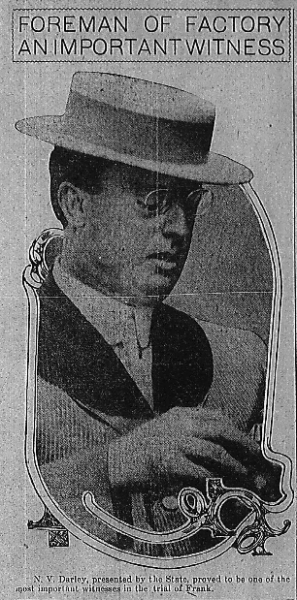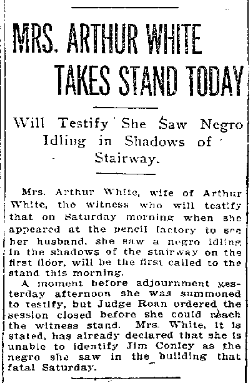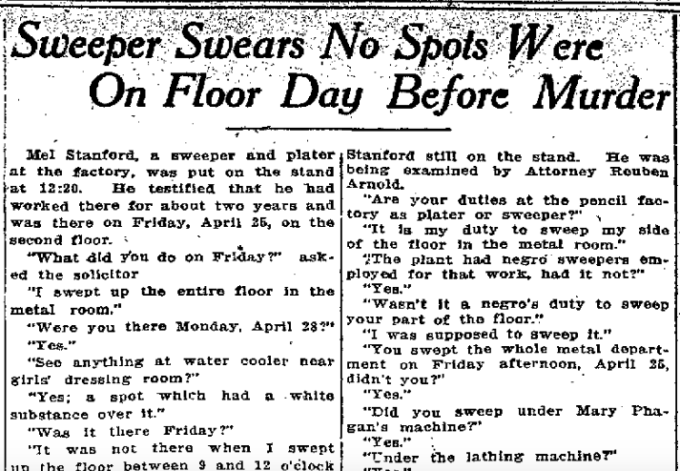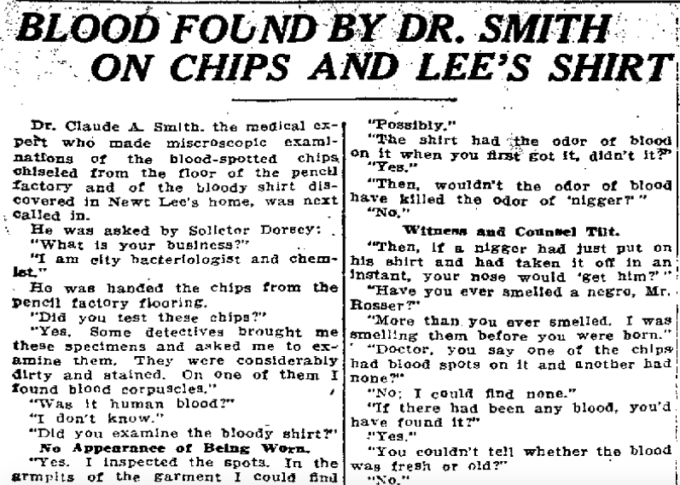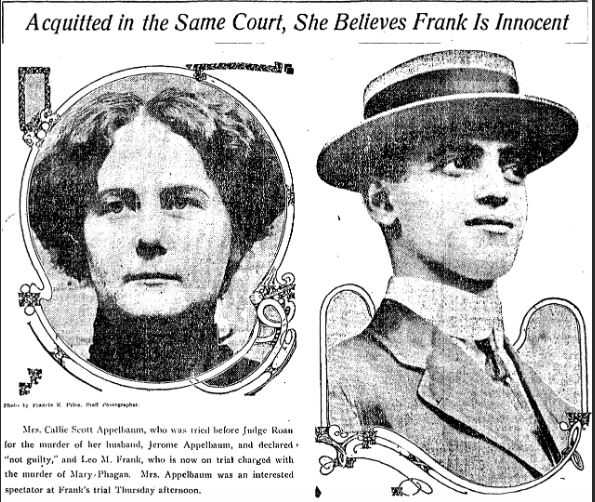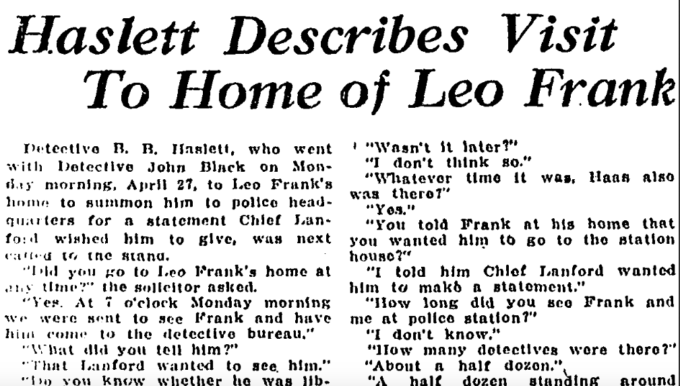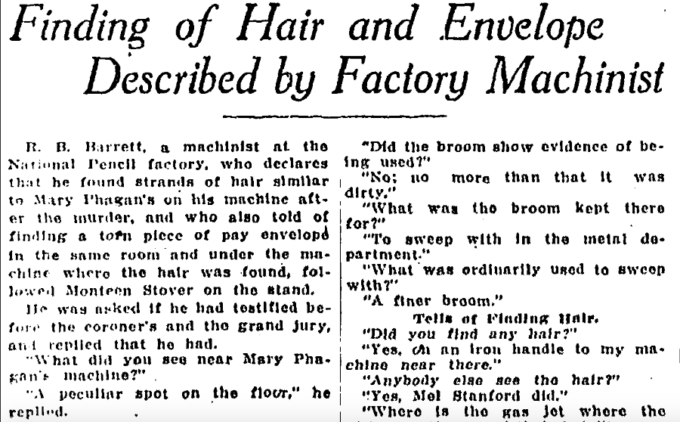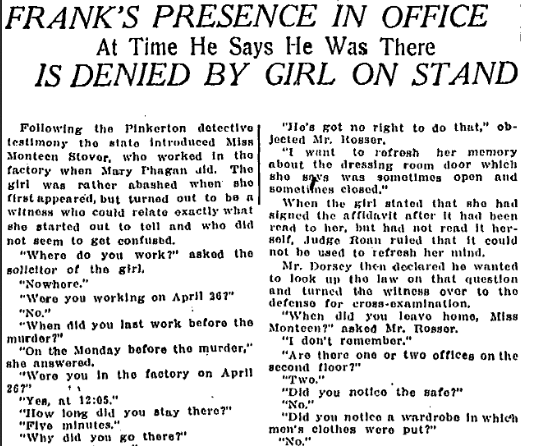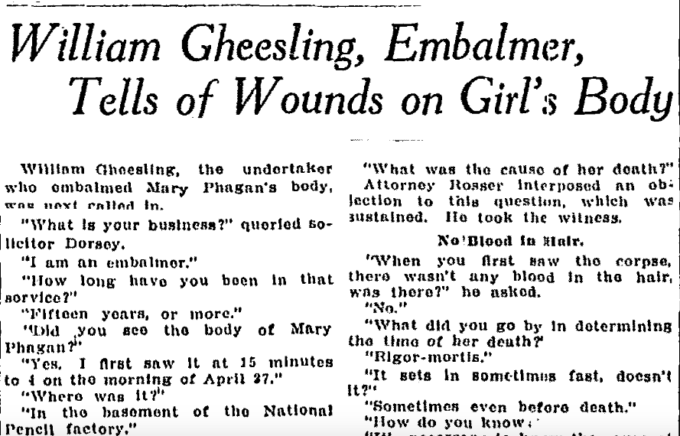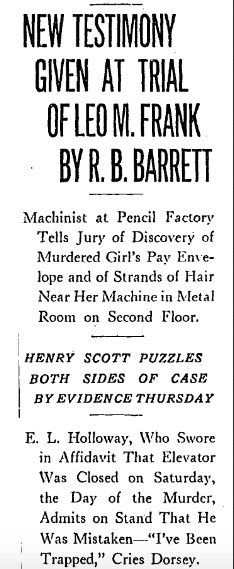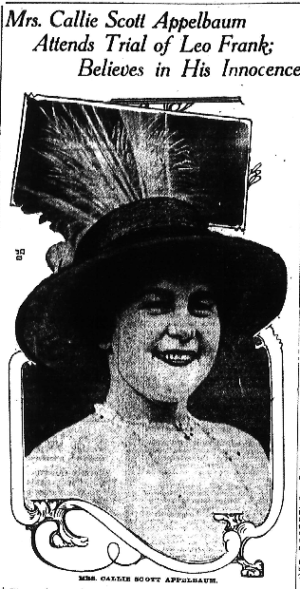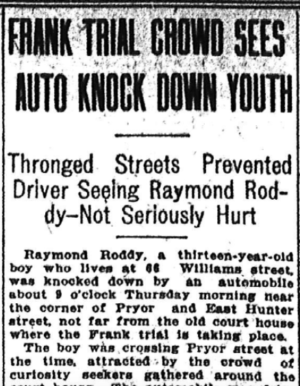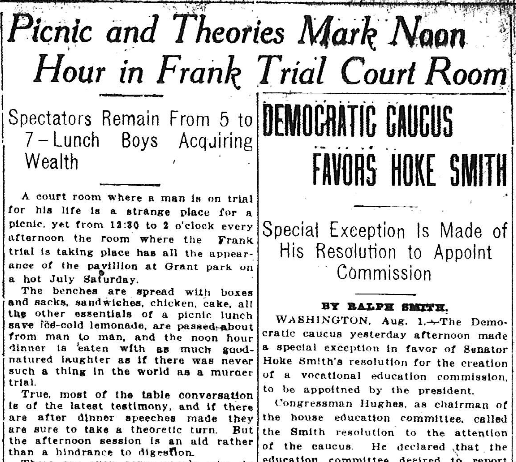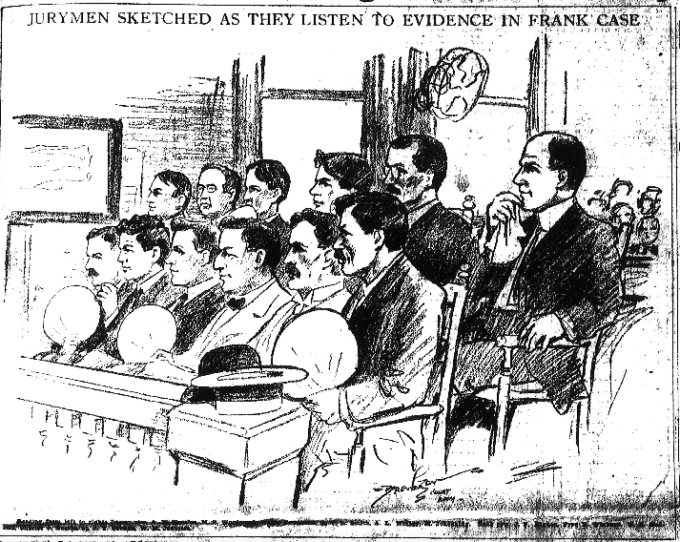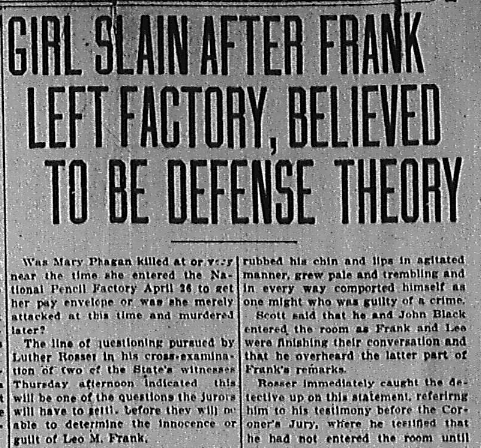Another in our series of new transcriptions of contemporary articles on the Leo Frank case.
Atlanta Georgian
August 2nd, 1913
Newspaper on Judge’s Desk Causes Protest
DR. HURT UNDER FIRE OF DEFENSE, HITS A DR. HARRIS TESTIMONY
A genuine sensation was sprung at the trial of Leo M. Frank Saturday morning when Luther Rosser and Reuben Arnold, attorneys for the defense, asked the State to consent to a new trial on the ground that Judge Roan had allowed the jury to catch a glimpse of a headline in the first extra of The Georgian.
Judge Roan had laid the paper on the stand in front of him, and, according to the defense, the headline across the first page could be read by the men in the jury box.
The headline said: “State Adding Links to Chain.”
The defense’s lawyers went into immediate conference with the judge, and a few minutes later asked Solicitor Dorsey to consent to a new trial. The Solicitor refused.
Rosser Asks Explanation.
Rosser and Arnold then came into the courtroom and asked that the jury be withdrawn.
Rosser addressed the court:
Continue Reading →
